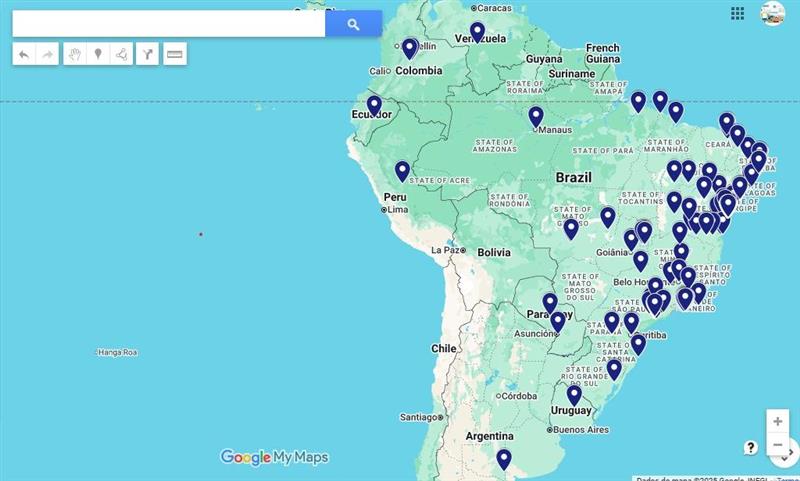PAS
Employment in services sector grows 7.8%, hits record of 13.4 million
August 31, 2023 10h00 AM | Last Updated: September 04, 2023 03h51 PM
Highlights
- The population employed in the services sector grew 7.8% in 2021 over 2020 (or more 970.5 thousand persons), reaching 13.4 million, a record in the time series.
- In 2021, employment in Services is already 4.5% above that in 2019 (pre-pandemic level). The highlights of this recovery in the period were Technical-professional services (more 198.9 thousand employed persons), Office and administrative support services (more 189.4 thousand) and Information technology (more 119.9 thousand).
- On the other hand, employment in Services rendered mainly to families fell 8.5% against 2019, influenced by Food services, which lost 223.7 thousand jobs.
- The number of active companies grew 7.9% between 2019 and 2021. It rose 9.2% in relation to 2020. In 2021, the sector had 1.5 million companies, which earned R$2.2 trillion in net operating revenue and R$1.2 trillion in value added.
- Three sectors concentrate 74.7% of the companies: Professional, administrative and complementary services (562.4 thousand), Services rendered mainly to families (385.7 thousand) and Transportation, support activities for transportation and mailing activities (166.6 thousand).
- In 2021, the sector of Transportation, support activities for transportation and mailing activities was the one that mostly increased the representativeness in the Services sector against 2020, with 29.3% of the net operating revenue.
- The companies in the services sector payed R$432.3 billion in salaries, withdrawals and other compensation. The monthly average salary dropped from 2.3 minimum wages in 2012 to 2.2 minimum wages in 2021.
- In 10 years, the concentration in the Services sector changed from 10.2% to 7.4%.

The Annual Survey of Services (PAS) 2021 showed a total of 1.5 million active companies, a growth of 7.9% over 2019 and of 9.2% over 2020. These companies employed 13.4 million persons, a record in the time series started in 2007, and paid R$432.3 billion in salaries, withdrawals and other compensation. Companies in this sector earned R$2.2 trillion in net operating revenue and R$1.2 trillion in value added. PAS investigates seven segments, with 34 activities at national level and 13 activities at regional level.
Synthia Santana, the IBGE´s Manager of Structural Analysis, highlights that the performance of the services sector reflects the upturn of the major Brazilian macroeconomic indicators in 2021. The Gross Domestic Product grew 5.0%, highlighted by the increase of 3.7% in the consumption of families in relation to a drop of 4.6% in 2020.
“The services sector is quite underpinned in the consumption of families and depends on the economic upturn. As ascertained by the IBGE in the National Accounts, the services sector grew 5.2% in 2021, after dropping 3.7% in 2020. This result was strongly influenced by the sector of Transport, storage and mailing (12.9%). According to the Continuous PNAD, the unemployment rate hit 11.1%, similar to the levels in 2019. It shows that the economy had already reached the pre-pandemic levels in 2021 and the results of the services sector show a similar situation,” completes Santana.

Three segments concentrate more than 75.0% of the revenue of the services sector
The major segments were Transportation, support activities for transportation and mailing, with the highest share (29.3%), followed by Professional, administrative and complementary services (27.5%) and Information and communication services (21.0%). The three segments account for more than 75.0% of the net operating revenue. Next came Services rendered mainly to families (9.9%), Other service activities (8.6%), Real estate activities (2.3%) and Maintenance and repair services (1.4%).
Synthia Santana highlights the drop in the share of the segment of information and communication services along the time series. In 2007, that segment ranked in the first position with 31.2%, dropping to the third position with 21.0% in 2021, being surpassed by Transportation, storage and mailing in 2010.
Among the 34 activities, the highlights are Road transportation of cargo, which represents 12.9% of the net operating revenue, with a gain of 2.8 pp in relation to 2012; Technical-professional services, 12.1% (+1.3 pp); Information technology, 9.8% (+3.2 pp), Telecommunications, 8.2% (-6.1 pp); and Storage and support activities for transportation, 7.0% (+1.0 pp).
“Of these five major activities, only Telecommunications lost share in ten years. The loss of share of the segment of Information and communication services is due to the drop of the activity of Telecommunications, since information technology has grown, being the activity that mostly gained share, whereas the one that mostly lost was telecommunications,” analyzes the manager.
Employment grows 7.8% between 2020 and 2021
In 2021, the services sector employed 13.4 million people. Between 2019 and 2021, the number of jobs rose 4.5% with the increase of 574.3 thousand jobs, leveraged by the growth of 572.4 thousand (10.8%) in Professional, administrative and complementary services and of 142.7 thousand (13.4%) in Information and communication services, in contrast with the reduction of 242.5 thousand (-8.5%) in Services rendered mainly to families. It rose 7.8% in relation to 2020.
“Having passed the immediate effects of the pandemic, the services sector managed to recover the employment levels of 2019. Among the exceptions, Services rendered mainly to families dropped 8.5% in employment, due to the reduction in the activity of food services. Yet, real estate activities (+21.9%), other service activities (+14.5%), information and communication services (+13.4%) and professional, administrative and complementary services (+10.8%) recovered,” highlights Santana.
Between 2020 and 2021, the highest change in employment was in intermediation in purchase, sale and rent of real estate (24.7%), followed by information technology (17.4%) and continued education activities (16.8%). In contrast, the major drops were in pipeline transportation (8.5%), mailing and other delivery activities (2.6%) and passenger transportation (2.4%).

Professional, administrative and complementary services account for 43.5% of employment
The activity with more persons employed is professional, administrative and complementary services, with 5.9 million jobs, the equivalent to 43.5% of the total number of persons employed in the services sector. It was followed by services rendered mainly to families (2.6 million), transportation, support services to transportation and mailing (2.5 million) and information and communication services (1.2 million).
Between 2019 and 2021, the most intense reductions in the number of jobs occurred in food services (223.7 thousand), passenger transportation (110.8 thousand) and travel agencies, tourism operators and other tourism services (20.9 thousand).

Concentration on eight largest companies in services sector drops to 7.4%
PAS registered 1.5 million companies working in the services sector in 2021. Of them, 74.7% were in the segments of Professional, administrative and complementary services (562.4 thousand), Services rendered mainly to families (385.7 thousand) and Transportation, support activities for transportation and mailing activities (166.6 thousand).
In ten years, the concentration of the revenue of the services sector in the eight largest companies, measure by the R8 indicator, changed from 10.2% to 7.4%. The concentration decreased particularly in two of the major segments: Information and communication services (from 37.2% to 32.1%) and Transportation, support services to transportation and mailing (from 16.6% to 11.7%).
Of the five activities with a R8 concentration indicator above 50% in 2021, four of them belonged to the segment of Transportation, support services to transportation and mailing. They were: Pipeline transportation (R8 of 100.0%), Air transportation (R8 of 92.1%), Mailing and other delivery activities (81.8%) and Railway and subway transportation (73.8%). The fifth activity with the highest concentration was Telecommunications (R8 of 70.4%).
In ten years, average salary dropped from 2.3 to 2.2 minimum wages
The monthly average salary retreated, changing from 2.3 minimum wages (s.m.) in 2012 to 2.2 s.m. in 2021. Information and communication services (4.5 s.m.) remained with the highest compensation, followed by Other service activities (3.6 s.m.), influenced by financial support services. The third highest salary comes from Transportation, support services to transportation and mailing (2.6 s.m.). The salaries of those three activities were above the average one (2.2 s.m.).
Southeast Region loses share in ten years, though it remains leading
The Southeast concentrated 65.1% of the total gross revenue of services, followed by the South (14.7%), Northeast (9.8%), Central-West (7.8%) and North (2.7%). In 2021, the Southeast Region maintained the largest shares in number of companies, gross revenue of services, salaries, withdrawals and other compensation, and employed personnel. The South, Northeast, Central-West and North regions followed in this order.
Between 2012 and 2021, the Southeast lost representativeness in every aspect of the survey. The South and Central-West regions were those that mostly grew in terms of share. The highlight in the South was the increase in the composition of the workforce, in terms of employment (1.7 pp) and salaries (1.8 pp), whereas the representativeness in terms of number of companies (1.2 pp) and gross revenue of services (0.9 pp) grew in the Central-West.
Transportation sector is the most important in three out of five Major Regions
In 2021, the segment of Transportation, support services to transportation and mailing recorded the largest share in three Major Regions: North (39.8%), Central-West (36.0%) and South (34.7%), highlighted by road transportation, which includes both passenger and cargo transportation, accounting for 15.2%, 25.6% and 22.6% of the gross revenue of services in these regions, respectively. In the North, the sector of Other transportation - railway/subway, pipeline, waterway and air transportation - was the major one, with 17.3%. Professional, administrative and complementary services led in the Northeast (31.4%) and Southeast (27.3%).
Between 2021 and 2021, all the regions registered a reduction in the average salaries, measured in minimum wages. The Northeast Region maintained the lowest values over the entire period, paying, on average, 1.6 minimum wages in 2021. On the other hand, the Southeast recorded the highest salaries, with an average of 2.5 minimum wages, being the only region with a compensation above the national average for the sector (2.2 minimum wages per month).

















